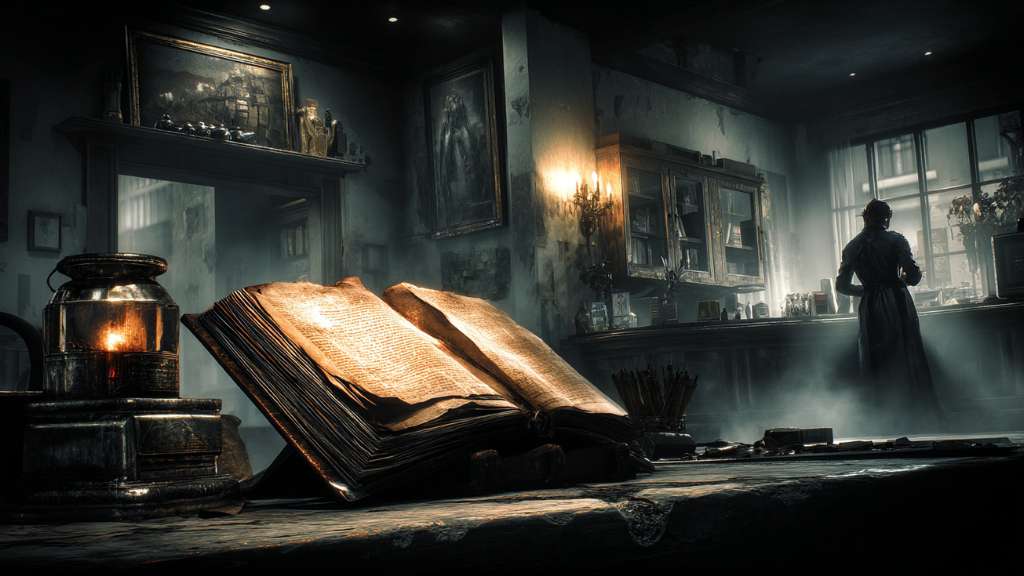In the quiet moments when the world slows down and shadows stretch across the walls, a certain kind of sound feels right. Not loud. Not bright. But deep, textured, and softly haunting. That sound is dark lofi music—a genre designed not for escape, but for introspection.
Whether you’re studying, meditating, journaling, or simply drifting through your own thoughts, dark ambient lofi offers more than background noise. It offers an atmosphere—an inner architecture made of bass, melancholy, and analog grit. In this post, we’ll explore what makes this genre so powerful, how it helps the mind find clarity, and why more and more listeners are turning to dark lofi to soundtrack their most meaningful moments.
What Is Dark Lofi Music?
At its core, dark lofi music is a blend of ambient downtempo textures and lo-fi aesthetics wrapped in a more atmospheric, sometimes melancholic tone. Unlike traditional lofi hip hop, which leans on jazzy samples and upbeat rhythms, dark lofi pulls inward. It often features:
- Subdued beats (sometimes not even beats)
- Dusty tape hiss
- Slow-moving melodies
- Haunting ambient textures
- Field recordings and organic imperfections
This fusion of minimalism and mood creates something immersive. Something felt in the bones. Not quite sad, not quite peaceful—just suspended between.
Why Does Dark Lofi Work for Focus and Relaxation?
Q: How can music so mysterious and moody actually help us focus?
A: Because dark lofi creates cognitive space. It quiets the mind without silencing it. The steady rhythms and subtle sonic layers act like a psychological buffer—filtering out mental noise while anchoring the listener in the present moment.
Unlike vocal tracks that demand attention or overly bright tunes that stimulate too much energy, dark lofi keeps things deliberately low-stimulus. This is ideal for:
- Deep work and flow states
- Meditation and breathwork
- Nighttime journaling
- Reading, studying, and creative problem-solving
- Emotional processing during quiet moments
The result? Focus without pressure. Emotion without overwhelm.
The Emotional Language of the Genre
Dark lofi music is deeply emotional—but not in the way pop music spells things out. Here, emotion is implied. Suggested. Felt in the pauses between notes.
Tracks often carry a sense of longing or memory. Some feel like wandering through an empty city at night; others like recalling a dream you never fully woke up from. These songs don’t lead you. They sit with you, letting your own interpretation fill the spaces.
This emotional openness is why the genre resonates so deeply with artists, writers, introverts, neurodivergent minds, and anyone tuned to life’s quieter frequencies. It allows you to feel without having to explain.

What Makes the Sound Unique?
Let’s break down the key elements that shape the sonic identity of dark lofi:
1. Melancholic Melodies
Simple, often minor-key motifs that loop and evolve slowly. They don’t resolve quickly—if at all. This creates a sensation of being suspended in thought.
2. Ambient Texture
From vinyl crackles to echoing synth pads, these textures wrap around the melody like mist. It adds atmosphere without cluttering the sound.
3. Minimalist Percussion
Drum patterns in dark lofi tend to be sparse, slow, and often buried in the mix. The beat is there, but it feels distant, like it’s coming from another room.
4. Field Recordings
Rain on a window. A faraway train. Footsteps in an empty hallway. These ambient noises give the tracks a place—a setting that the listener can imagine without words.
5. Lo-Fi Production Techniques
Intentional imperfection is part of the genre’s aesthetic. Slight detuning, tape wobble, hiss, and analog warmth create a sense of honesty. Nothing is polished—but everything is intentional.
What Makes Dark Lofi Music So Addictive?
Q: Why do people come back to dark lofi again and again?
A: Because it meets you where you are—without demanding anything from you.
It doesn’t distract, and it doesn’t dictate mood. Instead, it becomes a mirror. Listeners often describe it as “music that understands how I feel—even when I don’t.” That’s a rare quality in any genre.
Dark lofi becomes ritual:
- A morning soundtrack for intention-setting
- A nighttime cocoon after digital overload
- A balm for anxiety or burnout
- A secret companion while working on something meaningful
The Rise of Dark Lofi as a Genre
In recent years, dark lofi has quietly carved out its own corner of the internet. On YouTube, Spotify, and ambient label releases, we’re seeing a surge in curated playlists that focus not just on “chill vibes,” but on mood-driven sonic storytelling.
Creators like Wartonno Sound—who explore themes like liminal dreaming, emotional landscapes, and threshold states—are pushing the genre forward into cinematic territory. These tracks are often paired with visuals of abandoned places, fog-drenched streets, or surreal digital dreamscapes.
This marriage of music and visual atmosphere forms the heart of what we do at Dark Lofi Media: crafting immersive, emotionally resonant experiences that aren’t just heard—but felt across platforms.
Want to Experience It Yourself?
We invite you to listen to one of our curated dark lofi tracks right here. Let it play in the background as you read, study, or reflect. Here’s one to start with:
🎵 “Finding Lights” by Wartonno Sound
Let it wrap around your thoughts like fog.
Join the Movement
If you’ve ever felt like most music is too busy, too loud, or too polished, you’re not alone. The rise of dark lofi music is a response to an overstimulated world. It’s a reminder that stillness has sound. That emotion can whisper. And that mystery doesn’t need to be solved—it can be sat with.
We’re building a community of listeners and creators who appreciate depth over hype.
Sign up for our Dark Lofi Media newsletter to get updates on:
- New track and album releases
- Exclusive downloads and behind-the-scenes stories
- Liminal Thoughts (our blog’s inner journal)
- AI-generated art tied to each new soundscape
- Poetry, fiction, and visual storytelling from the world of Meridian City
👉 [Subscribe here] or explore the rest of our sonic world.





























